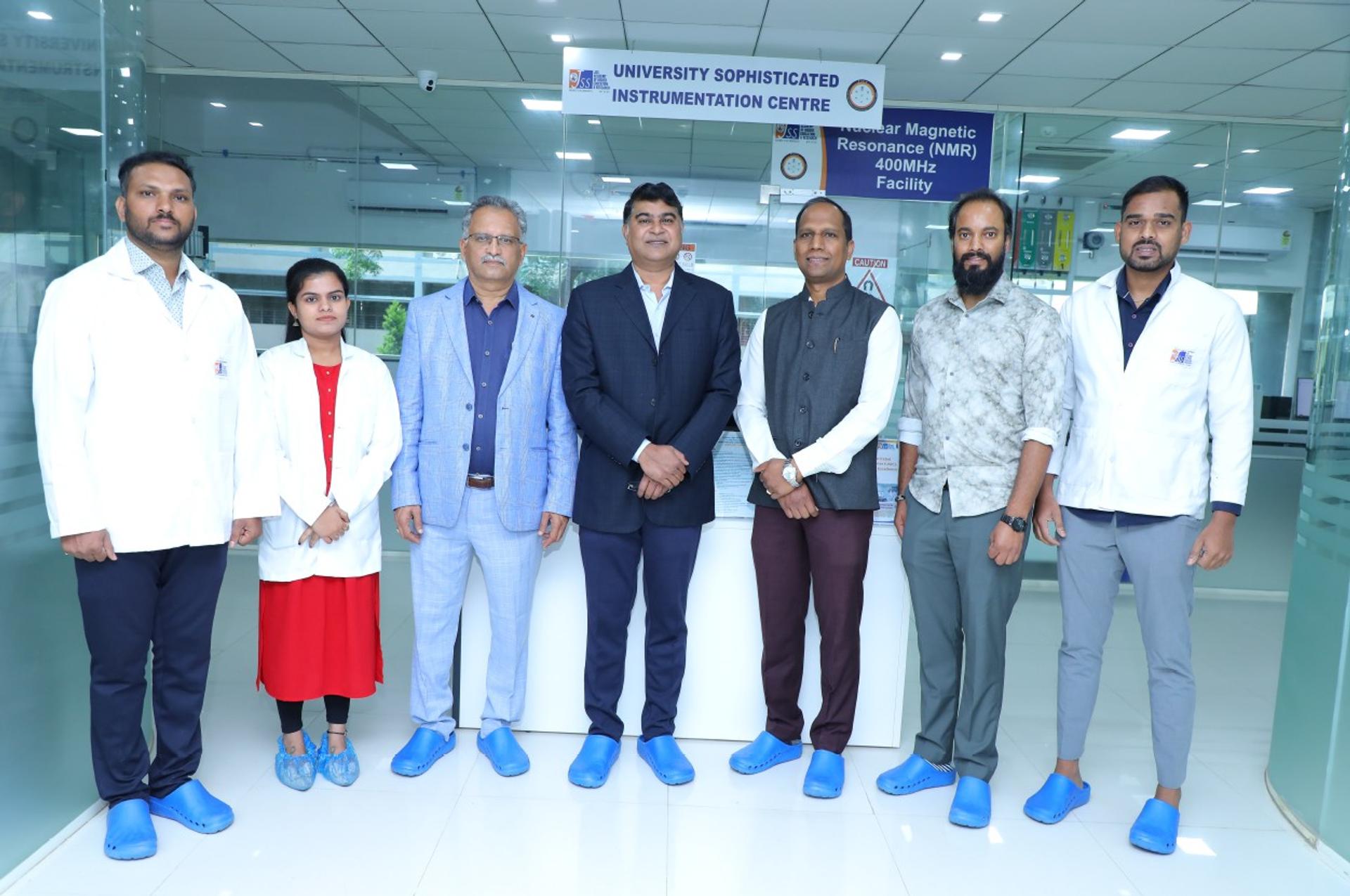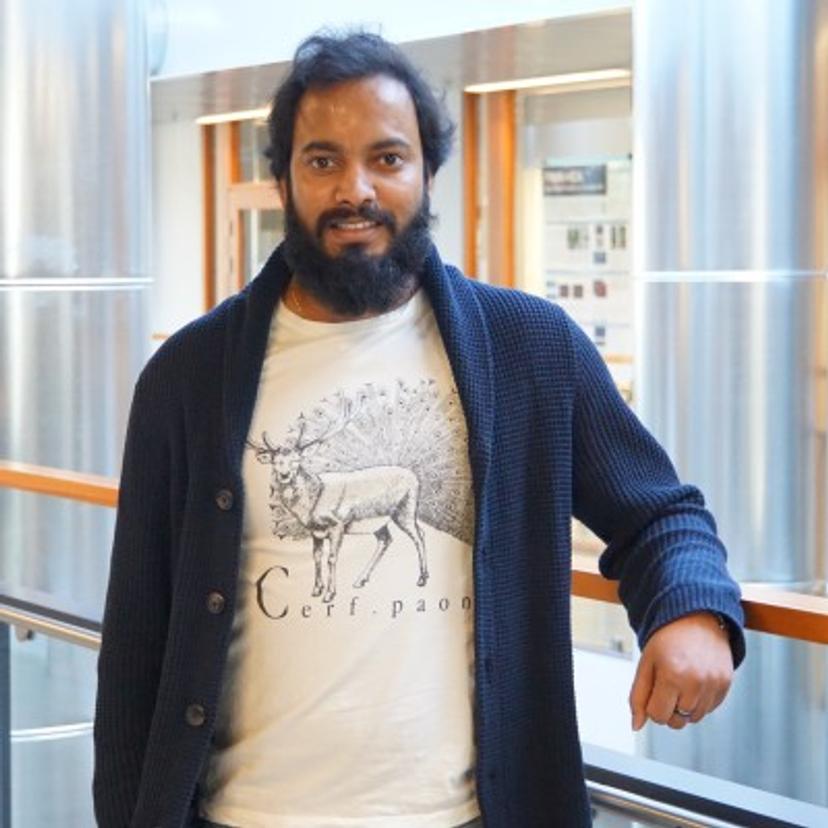Can immune-microbiome profiling revolutionize leukemia care?
With cases rising among younger adults in India, researchers race to develop predictive diagnostics and immune-informed therapies
30 Jun 2025Acute myeloid leukemia (AML) is one of the most common and aggressive forms of adult leukemia and it is rapidly becoming a major health concern in India. Striking an increasing number of individuals in their 30s and 40s, AML ranks as the 8th most common cancer in the country. Despite global advances in diagnosis and treatment, Indian patients face significant challenges, including delayed detection, limited access to therapies, high treatment costs, and low awareness. Alarmingly, only 30% of AML patients in India receive adequate care.
A team of researchers at JSS Academy of Higher Education and Research (JSS AHER) in Mysuru is working to address this. Dr. Komal Kumar Javarappa, a translational scientist and Assistant Professor at the University Sophisticated Instrumentation Centre (USIC), is leading innovative research focused on the role of immune dysfunction and gut microbiome imbalances in acute myeloid leukemia. Alongside Dr. H. Yogish Kumar, Associate Professor in the Department of Pharmacy, and Dr. Prashant M. Vishwanath, physician-scientist and Dean of Research, the team is utilizing advanced tools such as multicolor flow cytometry and next-generation sequencing (NGS) to gain new insights.
In this interview, Dr. Javarappa shares how this team is paving the way for more precise, affordable, and personalized treatment strategies.
Explore more of the latest news, reviews, and resources in our Accelerating Cancer Research Feature.

Dr. Komal Kumar Javarappa and the University Sophisticated Instrumentation Centre (USIC) team
What is acute myeloid leukemia, and why does it present such a challenge?
AML is a form of cancer that begins in the stem cells of the bone marrow and primarily affects white blood cells. It is characterized by the rapid accumulation of immature white blood cells, known as blasts, which interfere with the normal production of cells. This disruption leads to a severe reduction in healthy red blood cells, white blood cells, and platelets, resulting in bone marrow failure and myelosuppression. AML presents a significant clinical challenge due to its aggressive nature, high risk of relapse, increased susceptibility to infections, and the severe side effects associated with treatment. These factors contribute to its high rates of morbidity and mortality, making AML one of the most difficult hematological malignancies to treat effectively.
AML is increasingly affecting patients in their 30s and 40s in India. What do we know about why this demographic is so impacted?
India, home to one of the world’s largest youth populations, is witnessing a concerning rise in AML cases among individuals in their 30s and 40s, much younger than typically seen in western countries. This trend may be driven by a combination of factors, including increased exposure to environmental pollutants, radiation, industrial chemicals, genetic and epigenetic predispositions, unhealthy lifestyle habits (such as smoking, poor diet, and physical inactivity), and limited access to early diagnostic services. Additionally, chronic infections and immune challenges unique to the region may contribute to earlier disease onset. Urgent research is needed to identify the causes and develop targeted prevention and early intervention strategies for this demographic.
How is the immune system affected in AML, and why is this clinically significant?
In AML, the immune system is profoundly disrupted due to both disease pathogenesis and treatment effects. The excessive proliferation of leukemic blasts hinders the production and function of normal immune cells, leading to immune suppression, increased susceptibility to infections, and poor treatment outcomes. Key immune cells such as T cells, NK cells, and monocytes often exhibit signs of exhaustion or dysfunction, which may also be linked to gut microbiome dysbiosis. This combined immune dysregulation and microbial imbalance can further compromise treatment efficacy, including immunotherapy, underscoring the need for immune-based biomarkers and targeted therapeutic strategies.
Your work explores the link between immune health and the gut microbiome in AML. Why is this connection important, and how might it help improve risk stratification or treatment response?
The connection between immune health and the gut microbiome is increasingly recognized as a critical factor influencing disease progression and treatment outcomes in hematological malignancies, especially acute myeloid leukemia. Recent research is uncovering a fascinating link between gut microbiota and immune function, particularly in the context of AML.
Among the immune players influenced by the microbiome are unconventional innate-like T cells. These cells carry a semi-invariant T cell receptor (TCR) that recognizes microbial ligands presented by the MR1 molecule on antigen-presenting cells such as B cells, monocytes, and dendritic cells.
Microbiota-derived signals influence multiple stages of these cells’ development – shaping their expansion, activation, and function across various organs. These immune cells have demonstrated potent antimicrobial and antitumor activities. Upon activation, they secrete cytokines and chemokines like IFN-γ, TNFα, IL-17, granzyme B, and perforin, which help eliminate infected or cancerous cells. They also enhance B cell function, supporting antibody production and immune regulation.
Despite their critical roles in infection control and cancer immunity, the involvement of these cells in AML remains poorly understood. Exploring their numbers and functionality in AML patients could provide novel insights into disease progression, treatment response, and infection risk – offering a promising avenue for more personalized and effective therapies.
How do advanced tools like multicolor flow cytometry and NGS support your research, and what are their advantages for studying AML?
Multicolor flow cytometry and NGS are state-of-the-art single-cell analysis technologies that allow for the study of proteins and genes at the individual cell level. Multicolor flow cytometry enables the simultaneous detection of multiple surface and intracellular markers in millions of individual cells. This allows for detailed immunophenotyping of leukemic blasts and various immune cells, such as T cells and natural killer (NK) cells. These analyses provide insights into immune dysfunction, disease progression, infection risk, and treatment resistance in AML.
This technology is also valuable for tracking changes in immune cell function, activation, and exhaustion over time or in response to therapy. NGS offers deep genomic insights by identifying mutations, gene expression patterns, and clonal evolution in leukemic cells. NGS allows us to uncover the genetic heterogeneity of AML, detect minimal residual disease, and support personalized treatment strategies based on molecular subtypes. In addition, NGS will be used to study the gut microbiome of AML patients.
Is there potential for this kind of immune-microbiome profiling to guide more personalized AML treatment approaches in the future?
I expect the extensive immune phenotype profiling to reveal novel immune signatures related to immune dysfunction, increased risk of infections, treatment response, and disease progression – and that ultimately can be clinically implemented to predict the risk and guide physicians in the choice of treatment/supportive care for individual patients. By analyzing longitudinal samples from the same patient, we can study the impact of treatment on immune-microbiome to identify putative treatment options for patients with specific immune dysfunction.
Microbiome and immune signatures have the potential to further elucidate underlying mechanisms for antigenic drive and its relationship to AML and tumor microenvironment (TME) crosstalk. If such a link between microbiome, the AML-TME, and antigenic drive in could be established in AML, it may provide a valuable foundation for identifying new potential biomarkers as well as putative novel treatment targets to guide development of new translational studies and clinical trials.
What steps do you think are most urgently needed to improve AML outcomes?
One of the most urgent steps needed to improve AML outcomes is to implement immune profiling at the time of diagnosis, before initiating treatment. Both immune and gut microbiome signatures have been shown to correlate with treatment response and disease progression. Developing diagnostic tests to assess these signatures early – at the time of hospital admission – could help identify patients who are more likely to respond to therapy, allowing for more personalized and effective treatment strategies.
For instance, in one of our studies on multiple myeloma, we demonstrated that patients with higher frequencies of CD8+ T cells expressing cytotoxic markers, as well as increased levels of terminal effector CD8+ T cells and NK cells, responded better to treatment. A similar approach in AML (profiling the immune landscape prior to therapy) could significantly improve clinical outcomes by guiding treatment choices from the outset, rather than waiting for post-treatment responses.
Looking ahead, what role could collaborative research and public–private partnerships play in driving innovation and expanding access to care for AML in India?
By bringing together the strengths of research institutions, government bodies, and private industry, these collaborations can accelerate innovation in diagnostics, treatment, and patient monitoring. Joint research initiatives can help identify biomarkers, develop cost-effective therapies tailored to the Indian population, and generate real-world data to guide clinical decisions.
Public–private partnerships can ensure that these innovations are not only developed but also made accessible, especially in resource-limited settings, by supporting manufacturing, distribution and implementation at scale. Moreover, such collaborations can help build healthcare infrastructure, support clinician training, and facilitate the establishment of national cancer registries and biobanks, which are essential for long-term progress. Together, these efforts can bridge the gap between cutting-edge research and real-world care – improving early detection, reducing treatment delays, and ultimately enhancing survival outcomes for AML patients across India.
About Dr. Komal Kumar Javarappa

Dr. Komal Kumar Javarappa hopes to develop predictive diagnostics and immune-informed therapies for AML patients in India
Dr. Komal Kumar Javarappa is a translational scientist with a robust background in interdisciplinary research, particularly in hematological malignancies and other blood-related disorders. He has recently joined the University Sophisticated Instrumentation Centre (USIC) as an Assistant Professor. This newly established, state-of-the-art facility is located at JSS Academy of Higher Education and Research (JSS AHER) in Mysuru, Karnataka, India. USIC houses cutting-edge technologies, including advanced flow cytometry (FACS), next-generation sequencing (NGS), and nuclear magnetic resonance (NMR), and other world-class instrumentation platforms.
Dr. Javarappa brings international experience to the role, having worked in Sweden, Finland, Denmark, and Singapore. Over the years, he has developed expertise in single-cell technologies such as flow cytometry, imaging flow cytometry, CyTOF mass cytometry, and cell-based functional assays. At USIC, he collaborates with a dynamic team that includes Dr. H. Yogish Kumar, an Associate Professor in the Department of Pharmacy at JSS AHER and Dr. Prashant M. Vishwanath, a physician-scientist and Dean of Research at JSS AHER. Together, they are advancing translational research in India through innovation, collaboration, and excellence in biomedical science.
